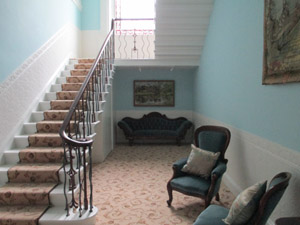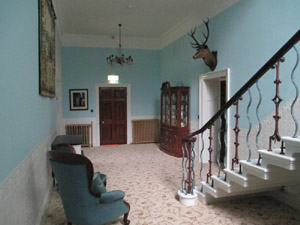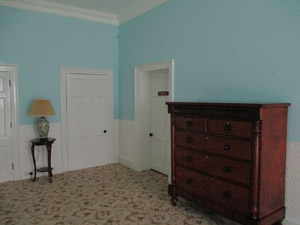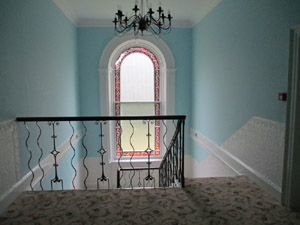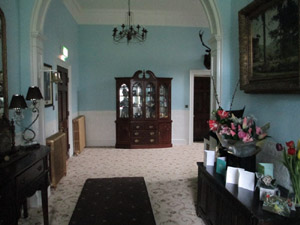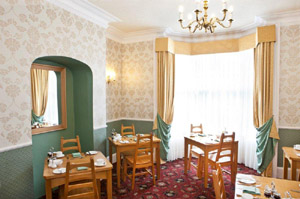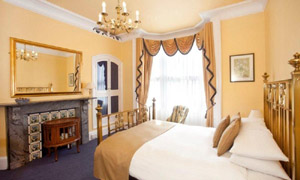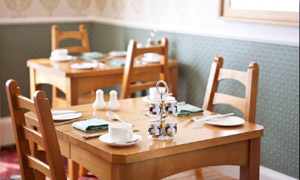Lincrusta...
G B Decorating is delighted to be recognised as skilled to the highest level and therefore awarded certification by Lincrusta as Advanced Lincrusta Installers.
In addition we are one of the first qualified Restorers and Conservers of Lincrusta, Cameiod and other high relief ceiling and wallcovering products. Through conservation, we are proud to contribute to the preservation of the legacy of historically important aspects of our building heritage.
We work closely with Lincrusta in product development and new hanging techniques and are trusted to such a degree that we have direct referrals from Lincrusta.
When handled by skilled craftsmen who understand this technical product, Lincrusta becomes a stunning asset to many decor styles. The effects and finishes which are achievable can be anything from the urban and minimal to the opulent and highly decorated. This is a high quality wallcovering which is only limited in finish by the imagination.
Patterns range from traditional period designs to the more contemporary. Durable and extremely tactile, it can be found to adorn the walls and ceilings of some of the world's most prestigious buildings.
Thorpe House Hotel
G B Decorating were invited by Lincrusta to complete the follow-on painting project at Thorpe House Hotel, once restoration of the entrance hall, staircase and landing wallcoverings and freeze had been restored, as part of an Lincrusta Restoration training course.
Hazelwood Hotel
We take on and conduct a variety of referrals from Lincrusta, The Hazelwood Hotel of York being such one example. Our services extend to the North, West and South Yorkshire regions and further afield by request.
History of Raised Materials for Relief Decoration...
Introduction
During the reign of Queen Elizabeth, the art of the plasterer ran riot through out the country and almost every house of any pretentions had its plaster relief decorations inside and out. This fashion continued through the reign of King James and Charles, and began to decay in the troubled times of the Commonwealth. It revived again later, but never to the same extent.
The Renaissance period gave us some very fine work; we imported the rococo styles of King Louis XIV, XV and XVI, and produced the styles termed Elizabethan, Tudor, The Adam, Chippendale and Georgian. During the whole of this period, namely from the 12th to the beginning of the 19th century, paneled wood, carved wood, and embossed leathers were continually used, together with tapestries and silk damasks, which were introduced in France in about the 14th century, for interior decoration, and although tapestries and silks cannot, strictly speaking, be termed relief decoration, their use is still relevant in the development of present day reliefs. An immediate forerunner, the raised "flock", which itself was a descendant from the velvet hangings of the Middle Ages.
The 19th century saw what one might term the first of the substitutes; that is to say, a class of decorative material which imitated one or more of the former classes mentioned. The first substitutes were Lincrusta-Walton and Tynecastle Tapestry, which at first imitated the lower relief plaster work and embossed leathers. Other and later substitutes were Cameoid, Anaglypta, Calcorian, Muromorna, Cordelova, Japanese Papers, Salamander, Lignomur, Corticine, etc. These materials also imitated the leathers and the low relief plaster work. They, however, were soon found to be usable for many purposes to which plaster could not be put.
Anaglypta, Cameoid, Lignomur and Tynecastle, etc., owing to the light weight of the material, were also found to be adaptable to higher relief than Lincrusta had been, and to be serviceable for moderate relief work with mouldings and ornament up to two or three inches in depth. Cameoid, Anaglypta, Tynecastle, Salamander and Cordelova, all produced the higher reliefs, while the lower reliefs of the Lignomur and so-called Leatherette, produced results more after the type of the embossed leathers, the use of which, owing to their expensive nature, had almost ceased.
Lincrusta Walton and Cameoid
Frederick Edward Walton and his brother, William, who in around 1860 invented the process for oxidizing linseed oil to produce an alternative form of rubber and originated the linoleum floor-cloth industry, described in the booklet 'The infancy and development of linoleum floor-cloth' [1925]. He coined the word 'linoleum' - 'linum' [flax] and 'oleum' [oil] and in April 1863 took out a patent on the floor-covering. In the year 1877 it occurred to the inventive mind of Frederick Walton that the material was capable of development in another and totally distinct way. Instead of applying it to floors he would, with some variation in its manufacture, apply it to walls, but with a modeled surface in relief in lieu of the printed coloured surfaces of the floor covering. The resulting product was Linoleum Muralis which was subsequently re-named Lincrusta Walton; 'Lin' for 'Linium' (flax) and 'Crusta' (relief) one of the chief ingredients of Lincrusta being solidified linseed oil, and the inventor's name being added to prevent other firms using the same title.
For flexibility and resiliency Lincrusta Walton is quite unequalled. Earlier productions were sufficiently strong and stiff enough to hold a wall up if there were any structural weakness. After a very few years' experience, and thanks to valuable comments and practical suggestions from some of the most prominent decorators who showed a keen interest in the development of the article, the old heavy canvas backing was discontinued in 1887 and superseded by a light waterproof paper. In due course the wall paper merchants realized its value and commenced to insert mounted samples and illustrations in their new pattern books.
Cameoid was the invention of D. M. Sutherland, the manager at Sunbury, and was originated in 1888 as an attempt to meet the competition with and demand for lightweight relief materials. The directors however, were unwilling to market an article which might compete with Lincrusta proper, and it was not until 1898 that they decided to produce Cameoid. It is interesting to note that the discoverer of Anaglypta by T. J. Palmer, who left the Lincrusta Co. in 1886, where he was London showroom manager and because of this same reluctance to admit alternatives to the original. Production of Cameiod ceased in around the year of 1915.
The year 1902 marked a further step in the development of Lincrusta with the introduction of glazed tile patterns which were instantly recognized as being a perfectly sanitary and hygienic decoration. Hospitals and public institutions were quick to appreciate the value of the new line, produced in a variety of colours with a permanent glaze, showing no perceptible joint.
Apart from its use for general decorative purposes, Lincrusta Walton was extensively used in ships, yachts, railway carriages, tramcars and motor cars. For shop-fronts and fascias it proved very effective and durable, being particularly adaptable for exterior decoration through its imperviousness to the weather if well painted or varnished after application. It is the only relief material which from the nature of its composition is not affected by the white ant, and, is therefore extremely suitable for tropical countries.
The introduction of Lincrusta Wainscot in 1912 (first used for panelling the Masonic Temple at Chester) opened up again an entirely new field. A form of oak dado had been previously tried in 1884, but this new innovation was an effective replica of real oak, capable of being stained to any colour and then polished with any ordinary wood polish. It could be applied at a fraction of the cost of real wood with precisely the same effect.
In 1918 the manufacture of Lincrusta was transferred to Darwen from where it was originally manufactured at Sunbury-on-Thames. As an alternative to oak panelling the company then brought out an excellent imitation mahogany, following this up with a range of plain leathers, which were an extremely good reproduction of actual skins. Lincrusta silks, another revival of a previously unsuccessful experiment (1885), had also been introduced and obtained a firm hold on the market at the second attempt.
Due to the Second World War, a number of pattern rollers were lost being seconded for the production of armaments, banishing them to the history books and reducing the range.
Anaglypta
Whilst Lincrusta Walton in its earliest stages was creating for itself a deservedly popular market, it occurred to T. J. Palmer, at that time the London manager of that company, that there was room for another product which through its character and price would appeal to the ordinary householder, so he set himself to solve the problem of embossing paper pulp before it arrived at the stage of finished paper. Two inducements offered themselves, firstly, the cheapening and simplification of manufacture, and, secondly the fact that although the relief would have a hollow back, it would be almost equal to a solid relief, because as there would be no straining of the fibres, the tendency of such a material after having been pasted and pressed home to the surface to be covered, would not be to revert to a flatter form.
After many experiments covering a period of years, T. J. Palmer was at last able to take out patents in 1887, for embossing paper pulp on a paper-making machine. The name given to the material was 'Anaglypta' derived from the Greek words 'Ana' meaning 'raised', and 'Glypta'meaning 'cameo.' The first manufacture of this material was undertaken by Storey Bros., Queens Mill, Lancaster, in the year 1888, and was eagerly taken up by the decorating and furnishing trade because of its extreme lightness in weight, its durability of relief, and last, but not least, its moderate cost as compared with other materials, placed it within the reach of the masses. Placing it a good second to Lincrusta in many respects, and actually superseded it for ceiling work, on account of this lightness.
In 1894 the business was acquired by C. & J. G. Potter & Company and transferred to Darwen, T. J. Palmer continuing as manager. Out of the original patent arose a process of making a higher relief decoration by means of hydraulic pressure from plastic pulp, and this latter method had been so improved from time to time that the company was able to produce such bold relief ornament as to vie with much of the best modelled fibrous plaster work and at a fraction of the cost.
This factor had enabled the Anaglypta works during the few years to cater so successfully for the ornamental work of public buildings, theatres, cinemas, etc., that examples may be found in most of these places throughout the world. The firm carried off two gold medals at the Paris Exhibition of 1900.
Continuing Success of Lincrusta
Due to the unique and outstanding charactistics of Lincusta, the product continues to be the only surviving relief covering unadulterated from its original introduction of 1877 still in production to this day. Others have attempted to simulate Lincrusta, but with little or varying success.
William Morris, Augustus Welby Nortmore Pugin, Dante Gabriel Rossetti and the Pre-Raphaelites all left their own impression. But perhaps none have left such a lasting impression as Frederick Edward Walton, the creator of Lincrusta, one of the most enduring embossed wallcoverings that has ever been produced. Even today, some of these original designs are still produced on the same brass rollers and by the same time honoured methods. The truly classical design and physical endurance of Lincrusta is equalled only by its aesthetic longevity. Virtually indestructible, impervious to water and resistant to hard knocks; it can still be seen hanging in perfect condition today.






